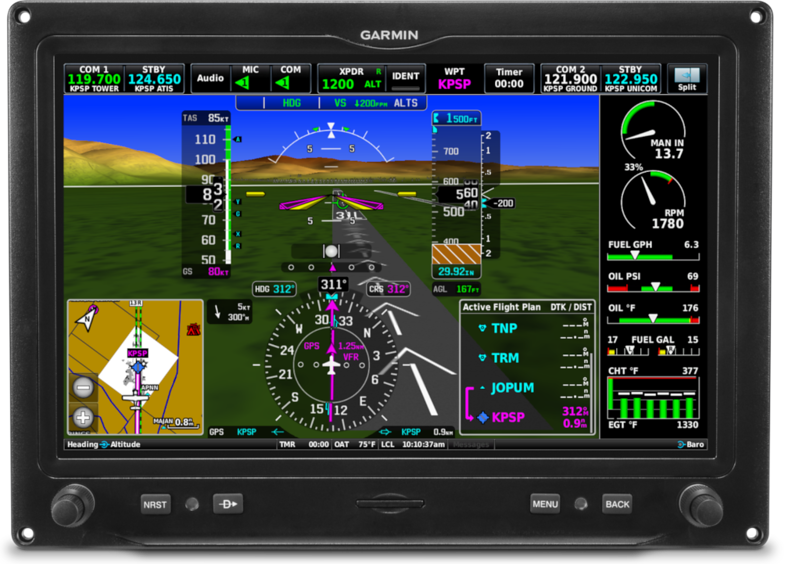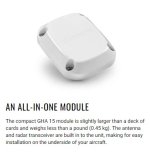Good Morning VAF!
Garmin is pleased to announce the GHA 15, a small and lightweight height advisor that uses radar technology to provide height above ground level (AGL) information on G3X Touch flight displays for experimental aircraft.
AGL readouts are shown on the G3X Touch display and drawn on the altitude tape or gauge at altitudes as high as 500 feet AGL. Using the readings provided by GHA 15, G3X Touch flight displays can also provide AGL audio callouts via their audio output to help keep the pilot’s eyes looking outside the cockpit.

Beginning at 300 feet, the pilot will hear audible AGL altitude callouts at select intervals down to 1-foot AGL. The pilot can configure the callouts to start and stop at specified altitudes. This is helpful for landings in unique areas where limited barometric altimeter setting information is available – such as backcountry flying.
The single module integrates all electronics into one compact unit that attaches to the bottom of the aircraft. Weighing less than one pound, the GHA 15 requires minimal space and modification for installation on aircraft.
This cost-effective, easy-to-install solution for experimental and light sport aircraft is available to order now and expected to start shipping in mid-August. A new revision of the G3X Touch Installation Manual, Revision AT, will be posted to our website later today that will include all relevant installation information for this LRU.
Please let us know if any questions come up!
Thanks,
Justin
Garmin is pleased to announce the GHA 15, a small and lightweight height advisor that uses radar technology to provide height above ground level (AGL) information on G3X Touch flight displays for experimental aircraft.
AGL readouts are shown on the G3X Touch display and drawn on the altitude tape or gauge at altitudes as high as 500 feet AGL. Using the readings provided by GHA 15, G3X Touch flight displays can also provide AGL audio callouts via their audio output to help keep the pilot’s eyes looking outside the cockpit.

Beginning at 300 feet, the pilot will hear audible AGL altitude callouts at select intervals down to 1-foot AGL. The pilot can configure the callouts to start and stop at specified altitudes. This is helpful for landings in unique areas where limited barometric altimeter setting information is available – such as backcountry flying.
The single module integrates all electronics into one compact unit that attaches to the bottom of the aircraft. Weighing less than one pound, the GHA 15 requires minimal space and modification for installation on aircraft.
This cost-effective, easy-to-install solution for experimental and light sport aircraft is available to order now and expected to start shipping in mid-August. A new revision of the G3X Touch Installation Manual, Revision AT, will be posted to our website later today that will include all relevant installation information for this LRU.
Please let us know if any questions come up!
Thanks,
Justin
Last edited:





